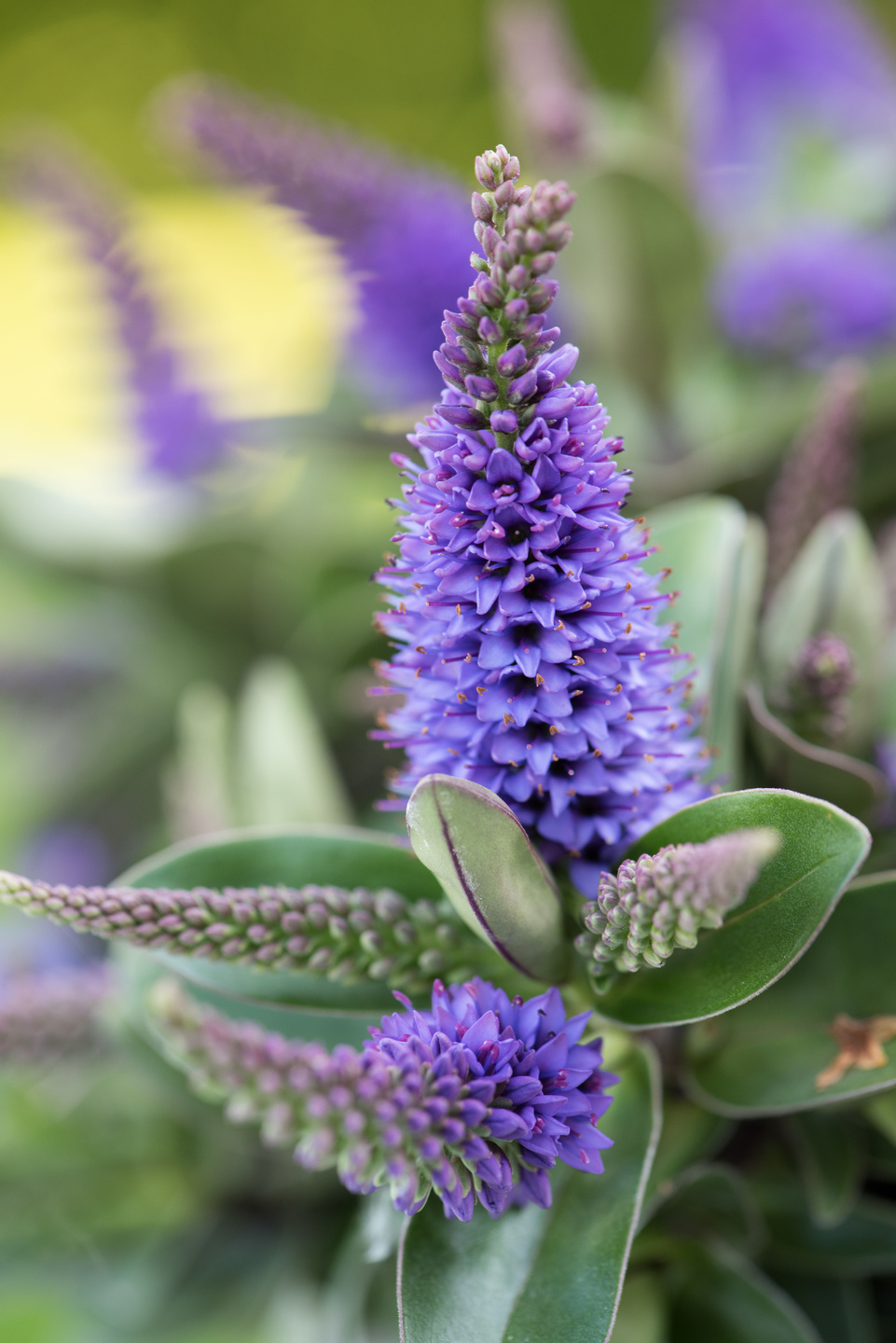The Hebe, a genus of evergreen shrubs hailing from the picturesque landscapes of New Zealand, has captured the hearts of gardeners worldwide. Renowned for their vibrant foliage and captivating blooms, Hebes offer a versatile and visually stunning addition to any garden. From compact varieties suitable for container gardening to larger specimens that can form impressive hedges, Hebes cater to a wide range of horticultural preferences.

One of the most striking features of Hebes is their diverse range of foliage colors. From deep greens to striking purples and variegated patterns, Hebe leaves create a captivating tapestry in the garden. Some varieties, such as ‘Hebe ‘Midsummer Beauty”, showcase stunningly colorful foliage that complements their vibrant blooms.
In addition to their ornamental foliage, Hebes are renowned for their showy flower spikes. These spikes, adorned with tiny, tubular flowers in shades of purple, pink, white, or blue, attract pollinators like bees and butterflies. The flowering period of Hebes can extend from late spring to early autumn, providing a continuous display of color throughout the growing season.
Hebes are relatively easy to cultivate, making them an ideal choice for both novice and experienced gardeners. They thrive in well-drained soil and prefer a sunny or partially shaded location. While they are tolerant of a wide range of soil types, they perform best in soils that are slightly acidic.
When planting a Hebe, it is essential to choose a suitable location that meets its specific needs. Consider the mature size of the plant and select a spot that allows it to grow to its full potential without overcrowding other plants. Dig a hole that is twice the width and depth of the root ball and gently place the plant in the hole, ensuring that the top of the root ball is level with the surrounding soil.
Proper watering is crucial for the health and vitality of your Hebe. During the growing season, water your Hebe regularly, ensuring that the soil remains consistently moist but not waterlogged. In drier periods, you may need to water more frequently, especially if your Hebe is planted in a container.
While Hebes are not heavy feeders, applying a balanced liquid fertilizer once or twice during the growing season can help promote healthy growth and abundant flowering. Be cautious not to over-fertilize, as this can lead to excessive foliage growth at the expense of flowering.
Pruning your Hebe can help maintain its shape and encourage bushier growth. The best time to prune your Hebe is in late winter or early spring, before new growth emerges. Remove any dead, damaged, or crossing branches, and lightly trim back the remaining branches to shape the plant.
Propagating your Hebe is a rewarding way to increase your plant collection. Hebes can be propagated by stem cuttings or by layering. To propagate by stem cuttings, take a 4-6 inch cutting from a healthy, non-flowering stem. Remove the lower leaves and dip the cut end in rooting hormone. Plant the cutting in a pot filled with well-draining potting mix and keep it moist.
Hebes are generally resistant to pests and diseases. However, they can be susceptible to aphids and scale insects, which can be controlled with insecticidal soap or neem oil. Additionally, root rot can occur if the plant is overwatered, so it is important to ensure good drainage.
With a vast array of species and cultivars to choose from, there is a Hebe to suit every garden style. Some popular Hebe varieties include:
Hebe ‘Midsummer Beauty’: This stunning variety boasts vibrant purple foliage and striking blue-purple flower spikes.
Hebes are incredibly versatile plants that can be used in a variety of landscape design applications. They can be planted in borders, rock gardens, and containers, or used to create low hedges or groundcover. Their compact growth habit and attractive foliage make them ideal for small gardens or patio containers.
The Hebe is a truly captivating plant that deserves a place in every garden. With its diverse range of colors, shapes, and sizes, Hebes offer endless possibilities for creating stunning floral displays. Whether you are a seasoned gardener or a beginner, Hebes are relatively easy to care for and will reward you with years of beauty and enjoyment.
A: Water your Hebe regularly, especially during dry periods. However, avoid overwatering, as this can lead to root rot.
A: Yes, Hebes can be grown successfully in containers. Choose a pot with good drainage and use a well-draining potting mix.
A: The best time to prune your Hebe is in late winter or early spring, before new growth emerges.
A: While Hebes are generally not considered deer-resistant, they are less likely to be eaten by deer than other plants.
A: While Hebes prefer full sun, they can tolerate some shade, especially in hot climates. However, they may not flower as profusely in shady conditions.





:max_bytes(150000):strip_icc()/star-of-bethlehem-plant-profile-4774326-hero-943e35e2dc3049b1b2baa110d5fa0e71.jpg?w=200&resize=200,112&ssl=1)
